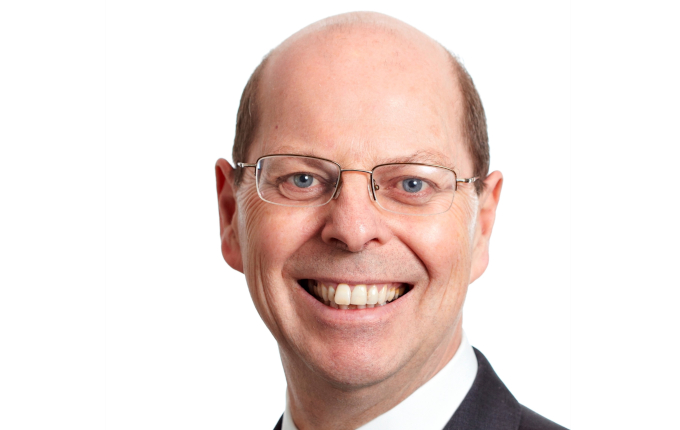Although the hype around AI has almost certainly resulted in a bubble for technology stocks, these events are necessary for a broad adoption of new technologies that will ultimately benefit many companies, veteran macro strategist Ian Harnett says.
Hedge fund manager Michael Burry of The Big Short fame recently disclosed short positions of about US$187 million against Nvidia and US$912 million against Palantir through his company, Scion Asset Management, in a 13F filing with the Securities and Exchange Commission.
Betting almost a billion dollars against a single company is not a risk management decision. It is a statement on AI. And Burry, who reportedly made US$700 million by shorting subprime mortgages during the US housing bubble, believes an AI bubble is about to burst.
Palantir, obviously, disagrees. Alex Karp, the company’s Chief Executive Officer, called Burry’s position “batshit crazy” during an interview on Squawk Box on CNBC. He pointed out that Palantir has quarterly cash flows of more than US$500 million, while its customer base grew 45 per cent year on year.
“Honestly, what is going on here is market manipulation,” he exclaimed during the interview.

Let's just recognise that this is a bubble. I think it qualifies for all our standard definitions of what would be a bubble. This AI trend has outperformed global equities six-fold in under a decade. The tech bubble [of 2000] only got to a five-fold outperformance
But Burry is not the only one to call a bubble. In September, fund manager GQG rang the alarm bell and said the market was showing dotcom-era overvaluations.
Perhaps the question of whether we are in an AI bubble is the wrong one. We almost certainly are, Ian Harnett, Chief Investment Advisor at Absolute Strategy Research, says in an interview with [i3] Insights.
“Let’s just recognise that this is a bubble. I think it qualifies for all our standard definitions of what would be a bubble. This AI trend has outperformed global equities sixfold in under a decade. The tech bubble [of 2000] only got to a fivefold outperformance,” Harnett says.
“Secondly, the companies themselves are using those elevated prices to invest in each other. They have now started using vendor financing: ‘I’ll give you some money if you then use that to buy my goods.’
“This growth of vendor financing has been a bit of a warning sign for us that you’re starting to run out of people to sell to and that’s really the problem. That’s another classic sign of a bubble.”
Fool Me Once…?
But often bubble narratives have the implicit connotation that we are being fooled; that below the shiny veneer of high prices lies nothing of value.
Take the example of e-retailer Pet.com. At a time when companies were being valued on the basis of eyeballs, Pet.com reached sky-high valuations, only to be liquidated two years after its founding when profits proved elusive.
But where Pet.com failed, e-commerce didn’t.
Today, we really are living in the internet utopia that internet gurus predicted back in the late 1990s.
“The point that we’ve made to clients is to recognise that today, you and I are living the digital dream. We’re talking to each other from across the globe, simultaneously, without delays whatsoever. We have the Internet of Things as well. This is everything analysts dreamt of in 2000,” Harnett says.

You and I are living the digital dream. We're talking to each other from across the globe, simultaneously, without delays whatsoever. We have the Internet of Things as well. This is everything analysts dreamt of in 2000
But this doesn’t mean there won’t be some moments of significant repricing along the way.
“Today, some of the leading companies are Microsoft, Apple, Oracle and Amazon, those four companies are the winners of today, but they were actually some of the top stocks in 2000 as well. And they fell in the tech bubble blow-up between 65 per cent, that was Microsoft, and 95 per cent for Amazon,” Harnett says.
“How long did they take to regain their bubble peak prices? In some cases, 16 years. This is what bubbles do to you as an equity holder.”
Bubbles Finance CAPEX Programs and Fuel Adoption of New Technologies
A key characteristic of bubbles is not that they herald the failure of a new technology, but rather that they function as a prerequisite for general-purpose technologies to become ubiquitous.
During a bubble, companies ramp up their CAPEX to finance the build-out of new technology platforms and infrastructure. We have seen this not just during the dotcom bubble, but also at the introduction of the steam engine, electricity and radio.
All this investment activity makes products based on the new technology rather expensive as companies try to recoup their costs, and so the bursting of the bubble helps bring prices down and ensure broad adoption of the new technology.
“It’s the [level of] CAPEX that normally defines the end of the bubble period. And it’s important to recognise that this kind of speculative frenzy is actually really important to building out that CAPEX because it reduces the cost of capital for the people doing the expenditure,” Harnett says.
“Historically, what you find is that the equity holders tend to pay for the CAPEX build-out one way or another. That write-down of capital is one of the key positives that then allows the technology to become more generally accepted.
“Part of the pushback to this thesis is: ‘But surely, GPUs are not like steam engines. Steam engines have a 25 to 100-year lifespan. [For a GPU] it’s three or four years.
“But what we’ve been saying to our clients is: ‘Well, that’s true, but you have these big things called data centres.’
“These are physical; these are big construction programs. Now, if we see a complete blow-up of this AI bubble, then those data centres will probably be written down.”
Harnett points out that the current levels of US Tech CAPEX growth are matching the tech bubble of 1999-2000, which seems to indicate we are nearing the end game for AI.
“What drives the correction in bubbles historically? It’s really quite boring; it’s cash flow. Either the tech companies will run out of cash or, more commonly, and this is what we saw in the TMT bubble, it’s the end user that runs out of cash,” he says.
“I have no doubt that AI will be a part of our lives, a deep part of our lives, over the next decade. But where the theme may be structural, the clients are often cyclical.”
Does Passive Investing Worsen Bubbles?
The rise of passive investing has sometimes been blamed for exacerbating the high valuations of the Magnificent Seven. As these companies grow bigger and become a larger part of the index, more capital will be directed towards these behemoths.
Harnett believes there is some truth to this statement and argues it means the first signs of the bubble bursting will probably not come from equity markets.
“I think it definitely worsens the bubble. One of the questions clients have been asking us is: ‘Where will the early warning signs come from?’ And the point that I make to people is it is definitely not going to be the equity market because of that passive investing,” he says.
Passive investing not only directs more money to a select few large companies, but it also impacts the market overall as the concentration in these stocks means larger corrections when sentiment deteriorates.
“What we increasingly see is momentum-based factor investing dominating. As trends take hold, [this leads to] the funnelling of capital towards the existing winners. But then when there is a bit of bad news, the market doesn’t come down five per cent, it doesn’t come down 10 per cent, it comes down 20. You just move from one state to a new state,” Harnett says.
Saving Grace
But there are some significant differences between the current bubble and the 2000 TMT bubble. Where during the dotcom era many rising names were fuelled by debt, the current CAPEX cycle is backed by equity from large, well-established companies.
This should mitigate the impact of a downturn on the broader economy, Harnett says.
“Historically, when you’ve had a debt-fuelled bubble like the subprime bubble, then the economic impacts tend to be greater. Equity reversals, such as in 1987 or 2000 and even 1998 with LTCM, those kinds of reversals tend to hit equity holders [harder], who are quite often at the higher end [of the market], or they’re just purely institutional.
“And so consumption isn’t necessarily damaged so badly, so the need to cut rates back to zero, as we saw in the GFC, becomes less acute.

If we see a complete blow-up of this AI bubble, then those data centres will probably be written down
“I think the interesting question will be: Do policymakers, if there is a blow-up here, want to immediately take rates back down to zero again? That would probably be an overreaction; it should be more modest.
“That said, the tech sector, probably five or six years ago, had US$200 billion in surplus and now they’ve got positive net debt of $200 billion. So you are starting to see this build-out of debt.”
Still, many of the key investors are companies in great financial health, something that couldn’t be said during previous crises.
“One difference between the TMT bubble and the AI bubble is that these companies are in a later stage of development. They have positive earnings. They have positive cash flow. So that is something in their favour,” Harnett says.
“But these kinds of prices are still pretty excessive. You need to keep growing at 30, 40, 50 per cent. Historically, that has been a pretty good warning sign.”
_________
[i3] Insights is the official educational bulletin of the Investment Innovation Institute [i3]. It covers major trends and innovations in institutional investing, providing independent and thought-provoking content about pension funds, insurance companies and sovereign wealth funds across the globe.



